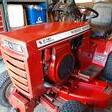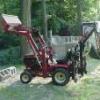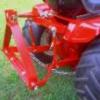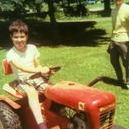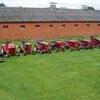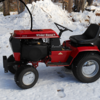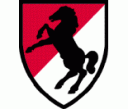Leaderboard
-
in Posts
- All areas
- Markers
- Marker Comments
- Marker Reviews
- Articles
- Article Comments
- Article Reviews
- Classfieds
- Classified Comments
- Classified Reviews
- Wiki's
- Wiki Comments
- Wiki Reviews
- Blog Entries
- Blog Comments
- Images
- Image Comments
- Image Reviews
- Albums
- Album Comments
- Album Reviews
- Files
- File Comments
- File Reviews
- Posts
-
Month
-
All time
November 28 2011 - April 26 2024
-
Year
April 26 2023 - April 26 2024
-
Month
March 26 2024 - April 26 2024
-
Week
April 19 2024 - April 26 2024
-
Today
April 26 2024
- Custom Date
-
All time
Popular Content
Showing content with the highest reputation since 03/26/2024 in Posts
-
36 pointsI have wanted to make this post for the past ten months; today I drove a Wheel Horse for the first time since my stroke! My wife was a bit apprehensive about the whole thing and I wasn't even sure I could get on the 310-8; but I did and it felt SOOOOOO GOOOOOOD
-
27 pointsAs of February I'm officially an "empty nester". After a long search my son & his fiance' finally found a house that fit their needs. He had mentioned to to his Mother that "I think I'm going to need a Wheel Horse to mow the lawn", her reply was "I think your Dad can spare one". LOL. So I'm starting him out on the same model & deck I started out on in 1979, one of my C-81's with a 36" RD deck. I've had her ready to go for him for a while now & since the trailer was stiil hooked up from @Pullstart's plowday on Saturday, I decided Sunday was the day. All I can say is this was one of the greatest weekends of my life that I'll always rememember. Loaded up Delivered And yes, I'll give him a mule drive with a knob on it.
-
26 pointsFigured it was time I start a post on here documenting my addiction! Here are two of my favorites
-
24 points
-
24 pointsJust last week I said no more tractors for me since I bought a big tool box for the garage. Well fast forward to today and I dragged 3 more home and a bunch of NOS parts. The guy has more and I plan on reaching back out to spend some more time digging to see what else he has. As for the tractors I wanted just one and my friend was buying the other. When we got there he offered us a 3rd and we had to pool some cash to get it. I plan on letting my buddy have the 3rd tractor. Definitely had fun picking in the upstairs of the guys garage where he had tons of parts for so many pieces of equipment, model A’s and so much more.
-
23 pointsPulled the plow off yesterday and stood it up ready to store. Came out this morning and found this!
-
23 pointsToday's menu - Get this baby ready to light the fire. In order to do this I needed to have "dead man" throttle control. My plan is to turn the brake peddle into the gas peddle. Gathered the basic parts to make this happen. Starting with a piece of pipe that I bought for some reason. Guess this must of been the reason. I did not think that I would be able to weld to the cast metal that the peddle is made of very well, so the piece of pipe gave me some thing to weld to. I cut the threaded ends off from the pipe and the cut it length wise so that it would fit the curve of the brake peddle. Then cut the rest of the parts to make this into a gas peddle. Next up, burn these parts together. Drilled and tapped the peddle so that the assembly could be bolted in place. 2 more pieces required to make this work, a bracket to hold the throttle cable, and a bracket for a positive stop. All three completed. Gave all these parts a quick squirt with some flat black to keep from rusting. Adjustable wide open positive stop installed. Throttle cable holder and foot peddle bracket installed, with a return spring for the peddle. Also installed a return spring on the engine side of the throttle. I think the weed eater piston shift knob turned out well. With these parts installed it was time to light the fire. Good news!! It fired right up. Runs great and runs through all the gears well, butt... the strait pipe is loud and and um, loud!!! A few shots of it out in the sun light. Only thing left now is the fire suppression system "fire extinguisher" and scale it out to get the weight dialed in.
-
22 pointsPut the new horse to work. The 310-8 ran great but the 42" SD did leave a small streak. May need a new set of blades. I had a little trouble using the clutch and brake pedals. I'm a hydro guy used to pushing one pedal to go forward and releasing the pedal to go backwards. But I didn't run over anyone or thing. Then used the 312H to till the bean patch and put up a rabbit fence.
-
22 pointsI just received the WHCC yearly news letter that included this article on Howard. For those that may not receive the news letter, I felt it should be made available.
-
20 pointsI had another thread on this tractor but danged if I can find it & never did post red porn glamor pics. A carcass from @Achto and a few years later. Finally finished it couple months ago. Motor runs so nice promptly put it to yard work. Some things are just better left untouched. Character they call it and tells stories. Not sure if orginal amp meter but just looked right. Many thanks to Dan for body work n paint n parts. @Pullstart for the motor. Most of my dealer stickers are on magnets.
-
20 pointsA few years ago at @WHX?? plow day I lost my wallet in the field while plowing. Fact jokes are still made about that. To top that off, shortly there after I plowed my phone under while plowing at my brothers place. After these events, my wife requested that I either empty my pockets while plowing or plow in nothing but my under ware. My brother was planting his field today, he looked down & thought crap I dropped my phone. Well... he didn't drop his phone, he actually found the phone that I lost. Pretty sure if I put it in a bowel of rice and clean it up it should still work. Now if we could only find my wallet.
-
20 pointsPhysical therapy for today .Getting ready to put some tri ribs on the front of my RJ for plow day .
-
19 pointsI was out of town last week so missed @Pullstart's plow day so the wife and I decided to mow down the winter rye grass today and plow my garden with the 418-8. It was getting a little out of control anyway. IMG_4892.mp4 IMG_9332.mp4
-
19 pointsFinally got time to lay some paint on my buddies 702 project, 3 coats of base and 3 of clear. Came out pretty decent for being 2 hoods welded together. By far the roughest hood I'd ever saved. There's a little dirt in it but what to you expect for an old garage lol
-
18 pointsHello fellow Horse Heads long time no post for me, life gets crazy & a lot of things change sometimes but anyhoo. So back a few years ago when I first got my 1994 314-H I had it at my shop going threw it. One of my customers walk past as im working and said, you know I think Iv got a Wheel Horse & im thinking "no you dont buddy". I give him my # to send pics thinking it was a big waste of time & after getting the pics I realized he did have a Wheel Horse! I hand shake bought it right there, asked him to bring it to my store & he said no problem. Well after almost 2 years it is finally in my orbit. I know very little about it other than his father-inlaw got it new and used it around his house moving snow and stuff. His father inlaw moved down south here when his daughter got married and gave the tractor to my customer because he had a farm & his the inlaw had no use for it anymore. Same with every barn find, "it was running when parked" 8 years ago, said one of the axel seal is leaking. Im happy and hope I can get it back in running order soon cause it is going to be handy around the truck farm!! I will post Pics as soon as I reinstate my membership
-
18 pointsMy son brought over his 1969 Work Horse 700 and together we showed it done attention. New rear AG’s. New adjustable tie rods and a front end alignment, also replaced the steering thingy that bolts to each frame rail (can’t think of the name). That part was a PIA!! He also brought over the 42” deck off his 314-8 so we could use my air gun to get his mowing blades swapped. Great day!
-
18 points
-
17 points
-
17 pointsPulled one of my 953's out of hibernation, or should I say pushed. The only way I could get it to run while it was in my fake garage was by spraying gas down it's throat. Pushed it into the work shop, pulled the bowl off from the carb & found it dry as bone. While the bowl was off I worked the primer handle on the fuel pump and got nothing up to the carb. Not going to bother rebuilding the fuel pump. Instead I started prepping to install an electric fuel pump. I did this on my other 953 and have not regretted the decision.
-
17 pointsBrave brave man... The Maynha Press: @ebinmaine was last seen videoing the BBT on an alleged hydro Wheel Horse... It has been months since Eb has been seen or heard from... Local authorities questioned and released BBT who simply said something about a preference for gears, her dojo, teaching Eb some martial arts and vague references to frying pans...anyone who sees or hears from Eb is asked to determine if we can have his stockpiles of C-160's...
-
16 pointsHauled this 414-8 home yesterday for cheap money. Not sure what my plans are yet. Obviously see what kinda shape the Magnum 14 is in. Then decide if it’s a parts rig or something I bring back into service. A much needed bath was first!
-
16 pointsSo I picked this up today. Yes I know you are all laughing. Let me remind you that it is indeed a Wheel Horse. I know , not very collectable. I'm sure they are not what the Ponds envisioned when they decided to build tractors. Yes I know it is not a tractor but......... isn't it cute !!! Wheel Horse 108-5 Rear engine rider. I picked it up off CL from the original owner. I have the original bill of sale, manual, and some other paperwork from over the years. Purchased new in 1986 for 1,218.73. An additional 181.65 for the bagger. It runs and drives very well. When I went to get it I drove it from his shed to my truck. I never tried to engage the mowing deck. When I got it home I noticed the deck dosnt engage. Got to be something simple. I know the PO would have told me if it had any issues. I will look at it another day. Raining today and it won't fit in garage. So bottom line is I scored an original one owner, original paint, original bill of sale, Wheel Horse. That has to make you smile even if it is a RER !! If that isn't a good score then maybe I will mention that I paid 75 dollars for it. Can't even buy a push mower for under 100. I'm happy I have a thing for RER. Had a couple in the past. I think @WHX?? has a soft spot for them as well. Anyone else oit there who PROUDLY add one to their collection ??? Dont be ashamed to admit it.
-
16 points
-
15 pointsAfter months of restoring, we finally wrapped up this project, years ago a friend bought this 502 with hopes of restoring it one day, late last fall we finally dug it out of the weeds and started its journey. We opted to turn this into a 702 for a few different reasons, ease finding a somewhat original engine being the biggest. I'm not sure what the rear came from, it is a little newer because the brake band mount is orientated differently, I'm guessing 953/1054 because of the long axles but I'm not positive. The hood was by far the worst of it, believe it or not there's 2 hoods welded together along with a few hand made pieces and easily 30 hrs in it including paint. All that's left is to apply the 2 hood decals and the new knurled knobs for the hood. I'm very pleased with the way it came out. These little tractors are a lot of fun and my buddy got a first hand experience in the time and amount of money it takes to fully restore one. All I can say is they're a labor of love.
-
15 pointsSo Wednesday I am driving down my street and there is a huge pile of garbage at the curb. I had to stop and look. I picked out this coffee table. Thought it was kinda cool. Mid century modern stuff is getting hot. So I brought it home. I cleaned it all up and waxed it. Came out pretty good. If you Google you see people asking 400 - 1200 dollars for one. I knew I had good taste !! It's in my living room now. This morning I went to an estate sale I bought this old Waterloo tool chest, loading with everything inside of it for 15 bucks. Add in the one owner little Wheel Horse I picked up Thursday for 75 bucks I think I'm having a good week.
-
15 pointsHeer four-wheel drive tractor During the first decade of the twentieth century the gasoline engine was gaining acceptance on farms across the country. Gasoline powered tractors were in their infancy while steam powered tractors were commonplace at the time. The Morton-Heer Co. was founded in 1910 by S. S. Morton of Pennsylvania and Chris Heer of the Heer Engine Co. to build tractors to a design by Heer. Christopher Heer was a true visionary, at a time when most tractors and large trucks utilized a roller chain drive for the final drive Heer developed an articulated four-wheel drive, four wheel-steering, tractor with equal-sized front and rear wheels and worm-drive axles in 1910. This nine-thousand-pound tractor was powered by a horizontally-opposed Heer Engine producing twenty-five horsepower and a three-speed transmission. The Heer four-wheel-drive tractor was the first of its kind when it came to market in 1912. Heer Engine Company received a patent on his tractor in1915. The Heer company was reorganized into the Reliable Tractor and Engine Co. in 1915. The new company manufactured the Reliable 10-20 2WD tractor until 1921. The same tractor was sold by Fairbanks, Morse & Co. as the Fair-Mor tractor. By 1912 the Morton Tractor Co. of Harrisburg, Pennsylvania, renamed the Morton Truck & Tractor Co., had developed a Morton 4WD tractor with some design features in common with the Heer tractor. By 1920 the Harrisburg Morton company had been replaced by the Pennsylvania Tractor Co. of Philadelphia, which produced the 4-cylinder engine Morton Four-Wheel Drive 40 and the 6-cylinder engine Morton Four-Wheel Drive 60 rated at 60HP. In the same time period several other variations of four-wheel drive tractors were being developed, we will see a few more in the coming days.
-
15 pointsAre we gonna have a new member with lots of repair questions and how to fix PO mods?
-
15 pointsEconomy Power King Economy Tractors were designed to be an affordable garden tractor which could be serviced by the owner. Simple straightforward construction utilizing readily available parts resulted in a machine that was dependable and easily maintained. Company founder James E. Turner had been a designer for the Red-E tractor company. He was the son-in-law of one of that company’s founders and in 1946 decided to strike-out on his own to build four wheeled garden tractors at his newly formed Engineering Products of Waukesha (EPW) company. The concept of utilizing off-the-shelf parts and subcontracting manufacturing of castings and machine parts was rather revolutionary at the time. EPW was designing and assembling the tractors while most of the expensive overhead for machining, casting, metal stamping and other costly processes was borne by the subcontractors. The first year was devoted to design and engineering of prototypes and very few tractors were sold. Early models had cable steering which was later replaced with chain steering and eventually a steering gear was utilized. Early units were not fancy, they were devoid of any sheetmetal and had a cast-iron seat without padding. They had a Wisconsin air-cooled single cylinder engine attached to a modified Crosley bell housing, clutch, and transmission. The transmission unit was modified by adding pulleys for belt power transfer. A modified Ford Model-A rear axle assembly with reduction gears at the axles, much like the Red-E tractors, was used as a final drive. The Economy tractor was tested at the University of Nebraska in 1952 under test number 483. Economy tractors also carried the names Power King, Country Squire and the Jim Dandy along the way. Country Squire Garden Tractors were built from 1951 to 1962 and sold by mail-order through magazine advertising and sales booths at state and county fairs. They were powered by 9HP Briggs & Stratton or Wisconsin 9.2 HP air cooled single cylinder engines. Jin Dandy joined the ranks in 1964 and a part of the Economy line of tractors through 1977 It was a bit smaller and more affordable than the Country Squire. The Jim Dandy could be equipped with 10, 12 or 14 horsepower engines. The larger Power King line also came along in in 1964 being offered in 10, 12, and 14 horsepower Kohler engines. In 1977 the Economy name went away and a new numbering designation using rear wheel size and horsepower to derive the model number. As an example, a 1612 has 16” rear rims and a 12-horsepower engine. Power King was sold to Support Services International in 1990 and production moved from Waukesha to Beaver Dam. Production continued until the late 1990s when Power King was sold again. Eventually the Power King assets were sold to Yazoo-Kees and production ended. Mission Manufacturing now owns the rights to Power King and supports the tractors. Country Squire 9 hp 30/48" deck 1951 – 1962 Jim Dandy 10HP 10 hp 48" deck 1964 - 1967 Jim Dandy 12HP 12 hp 48" deck 1965 - 1970 Jim Dandy 14HP 14 hp 36/48/60" deck 1968 - 1977 Power King 10HP 10 hp 48" deck 1964 - 1967 Power King 12HP 12 hp 36/48/60" deck 1965 - 1970 Power King 14HP 14 hp 36/48/60" deck 1968 - 1977 1212 12 hp 42" deck 1982 - 1990 1214 14 hp 42/48" deck 1988 - 1993 1217 17 hp 42" deck 1983 - 1987 1218 18 hp 42/48" deck 1988 - 1993 1218HV 18 hp 48/60" deck 1994 - 1999 1220HV 20 hp 48" deck 1997 - 1998 1612 12 hp 48/60" deck 1977 - 1983 1614 14 hp 48/60" deck 1977 - 1993 1616 16 hp 48/60" deck 1977 - 1983 1617 17 hp 48/60" deck 1984 - 1988 1618 18 hp 48/60" deck 1977 - 1983 1618 18 hp 48/60" deck 1988 - 1993 1618GV 18 hp 48/60" deck 1994 - 1999 1620 20 hp 48/60" deck 1989 - 1993 1620HV 20 hp 48/60" deck 1994 - 1999 2414 14 hp 48/60" deck 1977 - 1988 2416 16 hp 48/60" deck 1977 - 1983 2417 17 hp 48/60" deck 1984 - 1988 2418 18 hp 48/60" deck 1977 - 1983 2418 18 hp 48/60" deck 1988 - 1993 UT620 20 hp 48/60" deck 1989 - 1993 UT620HV 20 hp 48/60" deck 1994 - 1999
-
15 pointsI got my first wheel horse way back for $50, for a similar reason. PO changed the solenoid and starter. But he apparently didn't notice the large green blob of corrosion on the positive battery terminal. I had it running 10 minutes after I got it home. It sat in a barn for two years before I bought it. And now:
-
15 pointsI moved the snow machine to the long term shed where she can hibernate for the summer. Fixed the 312-8 internitten starting problem. By the marks on the starter, the PO blamed it on the starter. It was actually a loose seat switch connector that made it a $175 roller.
-
15 points
-
15 pointsPerrin Tractor Former North Dekota farm worker Raymond Perrin was transplanted to the state of Washington where he had a five-acre vegetable farm during World War Two. Needing a small tractor to operate the farm more efficiently he used what he had available, parts from a Model A Ford. With the assistance of a machine shop his tractor was a success, in fact so successful it became a business. Through word of mouth the Perrin Tractor Company became a reality. Having produced about one hundred-fifty tractors in Tacoma, WA, in a year the venture was a modest success. Despite difficulty obtaining engines, machined parts and steel Perrin was doing well but the next adventure was just around the corner. The Mexican government was launching a program whereby peasants would be given five acres of land and a small tractor to make themselves more self-sufficient. The government was seeking bids for small tractors and Perrin was eager to expand his fledgling business. Though he spoke no Spanish and didn’t have a strong business background Perrin loaded his tractor on a railroad car and headed to Mexico. The government was impressed and granted him an entail order for five-hundred tractors with more to be built in the future. While he was elated at the prospect of becoming a manufacturer, he knew that his home shop was inadequate for the new order. Seeking manufacturing facilities with a foundry he located a former WW2 defense plant that was immediately available in western New York State. At the end of World War Two the Reconstruction Finance Corporation was put in charge of converting America’s military-industrial complex into peacetime uses and helped arrange for Perrin to move his operation. Labor problems arose before production ever began and as a result no Perrin tractors were ever built in Arcade, NY. A brief venture in Kansas City, MO, was unproductive so the family moved west to Portland. OR, in 1947 where Perrin obtained some financial backing for his tractor production. In Portland they began building crawler tractors in addition to the wheeled models. The PERRIN name on the front rims and the locking cam clutch plate arrangement were two distinct identifying characteristics of the tractor. The Mexican order had evaporated due to Perrin’s inability to fill the order and lacking a distribution network it was imposable to compete effectively against the on slot of riding garden tractors that entered the market at that time. Perrin moved back to the Seattle area, did carpentry work and ultimately started his own successful construction business with his two sons. Perrin was an inventive individual who in 1951 pioneered and patented a cabinetry method that is somewhat similar that used by IKEA and virtually all “knock-down” furniture and cabinet manufacturers. I didn’t find any records of Perrin manufacturing these cabinets but hope he found financial success with them. Nov. 1, 1955 R. M. PERRIN CABINET CONSTRUCTION 2 Sheets-Sheet 1 Filed March 2, 1951 RAYMOND M. PERRIN 3 052:. 1i l My 0 attorney Nov. 1, 1955 R. M. PERRIN 2,722,468 CABINET CONSTRUCTION Filed March 2, 1951 2 Sheets-Sheet 2 t k 44 52 E 4 h \g 4 I 43 l7 '45 49 '6 g I 48 l2 49 5/ I5 4 r 22 Inventor l7 RAYMOND M. PERRIN 6 11 MM/M (Ittorneg United States Patent )fifice 2,722,468 Patented Nov- 1, 195.5 CABINET CONSTRUCTION Raymond M. Perrin, Portland, Oreg. Application March 2, 1951, Serial No. 213,624 The general object of the invention is to provide an improved form of cabinet construction for knock-down cabinets, whereby all the parts necessary are light in weight and can be shipped to the user in a compact, flat package. Another object is to provide a cabinet which is constructed of a number of identical parts and which is easy to assemble by the average person with a screw driver. Another object is to provide a cabinet which is of sturdy construction when assembled and which is economical to manufacture. Still another object is to provide an improved fastening means and arrangement utilizing a plurality of small corner brackets for drawing the parts together in tight fitting relation when assembled by the user.
-
15 points
-
15 pointsDidn't get to play with this tractor much over the weekend. I did find a little time to repurpose an old piston from a weed eater. First up was to make a couple of plugs out of some 5/16" round stock to plug the holes for the wrist pin. After installing the plugs and wrist pin clips, I heated the piston up. While heating the piston with a propane torch, I filled the inside of it with low temp aluminum weld rod. https://www.harborfreight.com/8-piece-low-temperature-aluminum-welding-rods-44810.html Took a little over 3 rods to fill it to my desired thickness. Now that I had some meat to work with it was time to take it for a spin on the lathe. Drill a 5/16" hole a little over 5/8" deep, then tapped it to 3/8-16. Threaded a 3/8" bolt into the hole & threw it back on the lathe for some polishing. This will now be the shift knob for my puller.
-
15 points
-
15 pointsI haven’t been here often and only for very short visits and some of you asked if everything is ok. Thank you very much for your concerns. I am feeling fine physically, just exhausted with all the testing and concerns this has cause specifically to my family. I went last week to the Hackensack Cancer Center where they are the so called authority on Multiple Myeloma, at least in this area. They pretty much confirmed what the other doctors had already confirmed only with much more detail and information. Or perhaps it’s just that now that I know more about it I am asking more questions. They state that I am at the “smoldering “ stage, meaning that it is pre cancer. Although they say that it is inevitable that I will eventually have it, it could take many years for it to happen. However since there is always a rather substantial increase in the adverse readings of the blood tests, I will have to continue to be tested every three months. In addition to all the tests I have been doing they also now want me to do a bone marrow MRI which is only available in two facilities in the state , luckily they being one of them. It’s not warranted nor recommended at this point to start any treatment or and medication, only when tests reach a certain threshold. So essentially summarizing this ordeal I am a ticking time bomb that inevitably will blow up. I don’t know if it’s better than actually having it now and dealing with it, since it is now a constant burden on everyone’s minds always worrying and watching me for any signs of distress. Essentially peace of mind is now for the family a thing of the past. I am not a worrying person but I don’t like to see the other’s constantly concerned over me specially my wife who totally depends on me. One of tests done was a PET scan which detects any thing abnormal going on in your body. Well, that was also the opening of Pandora’s box. Some things found I already knew but ignored, and others I didn’t know. So now on top of everything else I also am going to see a Vascular Surgeon to deal with all the bad veins on my leg, and do other tests to see why I am now anemic which they ruled out being related to the Myeloma at this stage. So as you all can see this is been the bulk of my activities. I think I know glow in the dark and will gave a permanent faucet attached to my left arm to withdraw blood.
-
15 pointsNow, I’ve been laying out, organizing, prioritizing tools, etc. I have a top/bench top tool box that I’m contemplating using. Many of the drawers in my current tool boxes are broken or bent. I’m emptying my boxes, hoping to downsize those and maybe I’ll part a box out to repair the damaged ones. This. Feels. Great!
-
14 pointsI saw these at the local agricultural/vintage auction at the weekend. I put a bid in at £10.00, and won!!! 6.90 x 180 -15. Unused. There was also a C161 with a 48” S. D deck, this made £750.00, and a 42” S.D deck on its own, which made £380.00! So I was quite pleased with my purchase! Now I suppose I’m going to have to look at building a “Horse” to fit them to!
-
14 pointsMy neighbor is into old cars and just pulled in with this gem He found down in Md. Then he said he also had this in the bed of his truck. Said he brought it along in case I wanted it. Yep! Accepting all interest and info on it's ID.
-
14 pointsSemi - Worker. Can't stand to just look at it in the garage. It was built to do something.
-
14 pointsHello All!! Long time no checking in but, THANK YOU ALL for the birthday wishes last month. Appreciate the acknowledgement of the day I was hatched 45 years ago. After finally getting time to be off work early today the opportunity to get the C125 out of it's hibernation since early 83-84. And the story of what exactly happened to it. How I wish Paul Harvey (September 4, 1918 - February 28, 2009) could do this narrative for me. Here is the rest of the story. Bill had two sons, Neil and Patrick. Neil being the oldest was tasked with the lawn work with their father and Patrick being 3 years younger, could help by raking, picking up sticks and trimming with hand shears. One day, the family was heading to Peoria and on the way, passed by the local lawn and garden dealer. Seeing a load of the new black hood tractors outside on display he pulled in and didn't hesitate to purchase a C125, the first Wheel Horse sold at Stoekers Lawn and Garden. Also, his first garden tractor. The tractor was delivered on a Friday afternoon and the salesman demonstrated how to operate it safely to Neil and his father. After taking turns on mowing the lawn, it was parked in the garage. Patrick wanted a turn but his father told him that he can use the push mower for a few years first and then graduate to the rider. Not the answer he wanted. Then came Sunday, the day of relaxing, family picnic and the accident. After church, they all raced home, mother busy with the prep of the drinks, salads and desserts, father cleaning the grill and placing tables in the shade with the help of both sons. That afternoon, people were enjoying their Sunday lunches and conversations when the sound of a motor got the attention of the father. A Wheel Horse had come out of the garage with Patrick driving... poorly at top speed. He managed to strike the concrete flower planter, picnic table with people, dessert table, and a pine tree. Needless to say, tractor was ruined and so was the picnic. I found out that the father had tried to repair/repaint the hood to the best of his ability but couldn't get it the way he wanted. So, instead of selling, or trading it off he decided to bury it in the back of his shed behind the many vending machines to be forgotten until a few months ago. His son Pat is the one who gave me this tractor and told me the entire history of why it was buried. The deal is that I maintain the lawn that tractor was intended for since he didn't get to. I installed a new battery and cleaned the fuel system. That's all! Runs beautiful, drives excellent, needs hood repainted and decals. Needs the Choke handle since it was broken off. Thinking about using plasma cutter and eliminating the discharge chute unless the deck from my 312 will fit. Have to get the C195 out for pictures from small to large
-
14 points
-
14 pointsWorking with help from a friend on the mount for the mid-blade so it’ll have lift, rotation, and roll (tilt). He has a Hyster with long forks. It makes me nervous having it so high up there but dang is it convenient to get under to work on! Upper and lower grader frame parts coming along. Tomorrow the main parts should be together and then onto final design and implementation of the controls.
-
14 points
-
14 points
-
14 points(It feels like) I’m moving. Moving in… finally… after 7 years being here! I have felt like I haven’t used the potential of the walls, due to the previous owner being family, and them never really moving out it feels. I have finally decided if it isn’t needed by now, it’s as good as useless to them. So, I’ve got a good pile in the scrap hopper, I’ve been filling my dumpster, and I’m making it count. I’ve been decorating. There’s lots of signage that I’ve had to hang up, just in piles. Tonka toys, race memorabilia, deer heads, tractors, etc. probably more to come there. I’ve hung a good handful of lights, and now believe I could use even more in certain areas. I have finally replaced every standard shop bulb with LED. Now, I’m getting into tool organization. Since being here, I have not had a shop vice. Can you believe that? I had this bench buried out back, and decided it needed to get into the shop. The racking I’ve stuffed stuff on for 3-4 years was emptied and moved out. Yesterday, the bench moved in. Not without issue, of course! I tried to skid it with the snowmobile sled (an old S10 hood), but it sunk a caster wheel into the drive and dumped over. Standing it back up on the concrete, I felt like I ripped my right peck a little. We happened to go bowling last night. It’s feeling ok today.
-
14 points
-
14 pointsWant to find a brochure on your older car or truck? http://www.lov2xlr8.no/broch1.html
-
14 pointsA Hoyer patient lift makes a great small engine lift. I purchased mine used, but in like new condition for $150. I added a fabricated spreader bar. It has a 400 lb capacity and includes a padded u-sling with head support and a commode sling with positioning strap. You should have seen the look on my wife's face after I unloaded it from the back of the truck. I told her I was investing in my future. Honestly, I haven't tried out the slings. LOL!
-
14 pointsWhy Georga went nuts? For several generations cotton had been king in the south. In 1915, the boll weevil reached Georga. Many cotton crops were destroyed, and the local farmers struggled financially. The whole area fell into a slump. H.M. Sessions, an Enterprise, GA businessman, decided something needed to be done about the boll weevil problem. He felt that peanuts would fare well in the region. Enterprise farmer, C.W. Baston, planted peanuts for one year at the request of Mr. Sessions. Mr. Sessions offered Mr. Baston the peanuts to plant, someone to harvest them, and $1 per bushel. Mr. Baston, whose cotton had been severely damaged by the boll weevil, took him up on his offer. Mr. Baston's crop of peanuts did well in its first year. He was able to pay off his debts and still have some money in the bank. He produced 8,000 bushels of peanuts in his first year. His great success caused many other struggling farmers to become interested in peanuts. Mr. Baston's harvest was used as seed for other local farmers who were eager to get into the peanut business. Many farmers grew nothing except peanuts. The great success of the peanuts proved beneficial to the state. Many farmers diversified even further and planted other crops. Cotton was still planted, but was not the sole focus of Georga’s farming efforts. According to USDA’s National Agricultural Statistics Service (NASS), the U.S. peanut crop in 2022 was estimated at 5.57 billion pounds. Georga accounting for more than 50 percent of all U.S. peanut production. Once viewed primarily as a cotton state, Georgia now consistently ranks first in the nation’s production of poultry and eggs and is also a top producer of peanuts, pecans, tobacco, blueberries, and peaches. Overall, the state accounts for 2 percent of total U.S. agricultural sales.
This leaderboard is set to New York/GMT-04:00

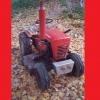
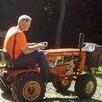
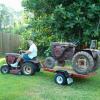



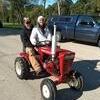

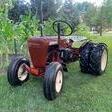
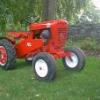
.thumb.jpg.bc8e484711dfd580d76688cb5d3c5d7d.jpg)



